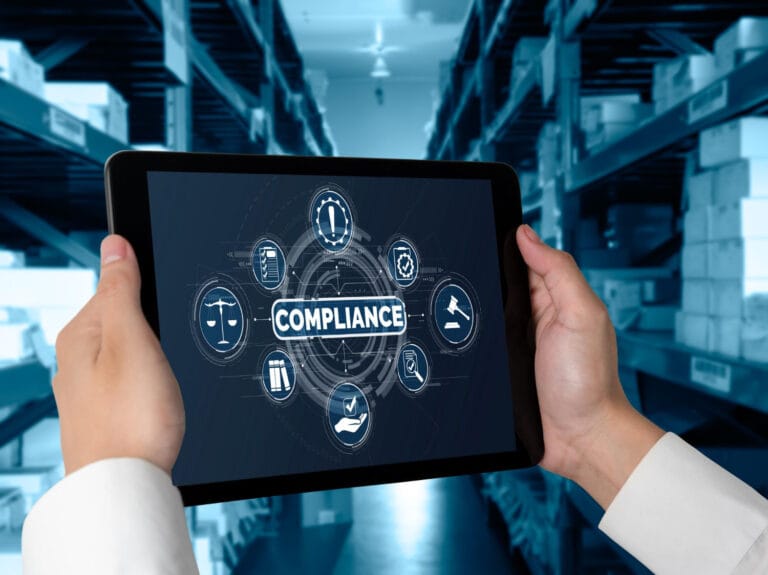Understanding the distinctions between an LMS, CMS, and LCMS is essential for driving content management and delivering impactful learning experiences that align with organizational goals.
An LMS (Learning Management System) focuses on delivering and tracking educational experiences, catering specifically to learners’ needs with tools like video-based content and quizzes. On the other hand, a CMS (Content Management System) is a versatile platform designed for managing various types of digital content without prioritizing any specific user group. Meanwhile, an LCMS (Learning Content Management System) zeros in on trainers by emphasizing the creation and management of learning materials.
In the discussion of LMS, CMS, and LCMS, it’s essential to grasp how each system serves unique purposes in the realm of education and training. For instance, while a Learning Management System (LMS) like Stratbeans excels in delivering structured learning experiences and tracking user performance, a Content Management System (CMS) is focused more on managing digital content across various platforms, such as websites and blogs. On the other hand, a Learning Content Management System (LCMS) emphasizes the creation and organization of learning materials, allowing for seamless collaboration among content developers. By recognizing these distinctions, organizations can better assess their specific needs and choose the appropriate system that not only supports their training objectives but also enhances overall content management and delivery strategies.
Understanding LMS, CMS, and LCMS
These systems each serve distinct roles in content management. Grasping their definitions and purposes clarifies their applications.
- Learning Management System (LMS): An LMS focuses on delivering, managing, and tracking learning content. It’s centered around learners and the learning process. You can use an LMS to assign courses, schedule classes, register learners, track progress, import SCORM/AICC/xAPI content, and generate performance analytics.
- Content Management System (CMS): A CMS provides a framework for creating, storing, managing, and displaying digital content. Unlike an LMS or LCMS, it lacks interactive learning features but excels in website design layout management. It supports text images videos SEO functionalities social media marketing security measures multiple languages vendor training ongoing support analytics features flexibility scalability easy adoption.
- Learning Content Management System (LCMS): An LCMS combines aspects of both LMSs and CMSs with a focus on developing educational content. Trainers create manage deliver reusable learning objects within this platform emphasizing collaboration among instructional designers authors subject matter experts to produce engaging materials tailored for specific learner needs while maintaining consistent quality across courses.
Key Features and Functions
Understanding the key features of LMS, CMS, and LCMS is crucial for selecting the right system. Each platform serves unique functions tailored to specific audiences.
LMS Features and Functions
An LMS focuses on learners by delivering and managing educational content. It provides content storage and delivery for online or classroom courses. Tracking capabilities allow monitoring of learner participation, scores, and engagement in various activities. SCORM compliance enables importing third-party content seamlessly. User management lets you create learner groups based on learning needs.
CMS Features and Functions
A CMS manages diverse digital content types but lacks interactive learning features typical in education-focused systems. It excels in website design with SEO integration, social media marketing tools, and analytics support. This makes it ideal for businesses focused on branding rather than structured educational programs.
LCMS Features and Functions
LCMS platforms prioritize creating reusable learning materials across different courses. They offer advanced authoring tools for custom content creation involving multimedia elements like modules or quizzes. Collaboration among instructional designers ensures high-quality output targeted at course creators rather than training managers. Although basic LMS functionalities exist here too such as analytics or performance tracking they’re not its primary focus compared to robust content development processes involved within an LCMS environment.
| Feature | LMS | CMS | LCMS |
|---|---|---|---|
| Content Creation/Authoring | ❌ | ✅ | ✅ |
| Content Delivery | ✅ | ✅ | ✅ |
| Learner Tracking & Reporting | ✅ | ❌ | ❌ |
| Assessment Tools (Quizzes, Exams) | ✅ | ❌ | ✅ |
| Progress Tracking | ✅ | ❌ | ❌ |
| Course Management | ✅ | ❌ | ✅ |
| Social Learning (Discussion Forums) | ✅ | ❌ | ❌ |
| Collaboration Tools for Authors | ❌ | ❌ | ✅ |
| Website & Blog Management | ❌ | ✅ | ❌ |
| Single-Source Content Management | ❌ | ✅ | ✅ |
| eLearning Specific Features | ✅ | ❌ | ✅ |
Comparing LMS, CMS, and LCMS

Understanding the differences between an LMS, CMS, and LCMS involves examining their primary functions and user focus. Each system caters to specific needs within educational and content management contexts.
Differences in Learning and Content Management
An LMS primarily manages learning experiences by delivering courses, tracking learner progress, and supporting various educational formats like quizzes and gamification. It’s designed for learners to interact with structured content created by instructors.
A CMS serves as a general-purpose platform for managing diverse digital content such as text, images, videos without a specific focus on learning. It excels in website design tools but lacks features tailored for education.
In contrast, an LCMS combines elements of both systems with a strong emphasis on creating reusable learning materials. It offers advanced authoring tools that allow instructional designers to collaborate effectively while retaining some basic LMS functionalities like analytics.
Use Cases and Ideal Scenarios
An LMS best suits organizations focused on delivering structured training programs where tracking learner engagement is crucial. It’s ideal for educational institutions or corporate environments needing detailed performance insights.
A CMS fits businesses aiming to manage broad digital content across websites or applications. Its flexibility makes it suitable for companies prioritizing branding through SEO strategies rather than interactive learning experiences.
An LCMS shines when the goal is developing comprehensive educational material collaboratively among subject matter experts. It’s useful in scenarios demanding rich content creation capabilities alongside essential management features found in traditional LMS platforms.
Choosing the Right Platform

Selecting between LMS, CMS, and LCMS depends on your organization’s specific needs. Each platform offers unique features that cater to different aspects of content management and learning delivery.
- Purpose: Determine if your focus is on delivering structured learning experiences (LMS), managing diverse digital content (CMS), or creating reusable educational materials through collaboration (LCMS).
- Audience: Identify whether you’re targeting learners needing performance tracking (LMS), general users engaging with varied content (CMS), or instructional designers collaborating on course material creation (LCMS).
- Features: Evaluate the essential features like progress tracking and eCommerce integrations in an LMS, SEO tools in a CMS, or advanced authoring capabilities in an LCMS.
- Budget: Assess cost-effectiveness based on required functionalities. An LMS might involve investment in training modules, while a CMS could incur expenses related to design and marketing tools.
- Scalability: Consider how each system scales with organizational growth—whether expanding learner bases with LMSs or broadening content libraries with CMSs or LCMSs.
Different stakeholder perspectives
L&D Head Perspective:
As an L&D leader, the focus is on delivering structured learning experiences that enhance employee development. The LMS is crucial for tracking learner progress and providing tailored educational content, ensuring that training programs align with the company’s skill-building goals. The LCMS, on the other hand, is vital for creating and managing learning materials efficiently, allowing the training team to develop and deliver engaging content seamlessly. Recognizing how a CMS supports the broader management of digital content ensures all training materials remain consistent and accessible across various platforms.
CHRO Perspective:
For the CHRO, selecting the right system impacts talent development and employee engagement. An LMS plays a critical role in fostering continuous learning, and helping track employee development and performance across the organization. The LCMS ensures training materials are updated and managed collaboratively, which is key for maintaining consistency in onboarding and professional development programs. Meanwhile, the CMS helps the HR team manage a range of digital content that communicates company values and culture across internal platforms.
Sales Head Perspective:
From a sales leadership perspective, training and content management systems are essential for equipping teams with the right skills and knowledge. The LMS ensures that sales teams receive ongoing, performance-based training through structured modules and assessments. The LCMS allows for the rapid creation and updating of learning content, keeping training relevant and tailored to sales goals. The CMS helps manage and distribute sales collateral, presentations, and product knowledge across multiple platforms, ensuring consistency in messaging.
By recognizing the unique roles of the LMS, LCMS, and CMS, these leaders can better align their content management strategies with organizational objectives, ensuring effective training, performance tracking, and content delivery.Final Thought
Final Thought
Choosing between an LMS, CMS, and LCMS can significantly impact how effectively you manage and deliver content. Each system has unique strengths tailored to different organizational needs. An LMS is ideal for structured learning environments where tracking progress is crucial. A CMS shines in managing diverse digital content with a focus on branding and marketing capabilities.
On the other hand, an LCMS combines aspects of both systems for teams focused on creating reusable educational materials collaboratively. Carefully consider your organization’s primary goals, audience, and necessary features when selecting a platform to ensure it aligns with your strategic objectives.


